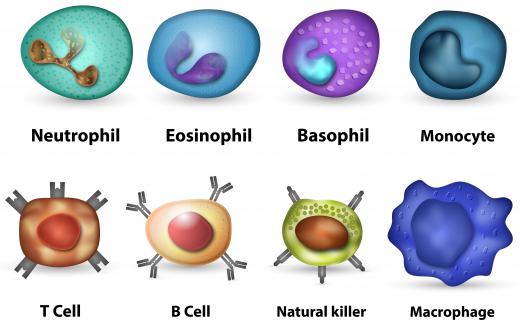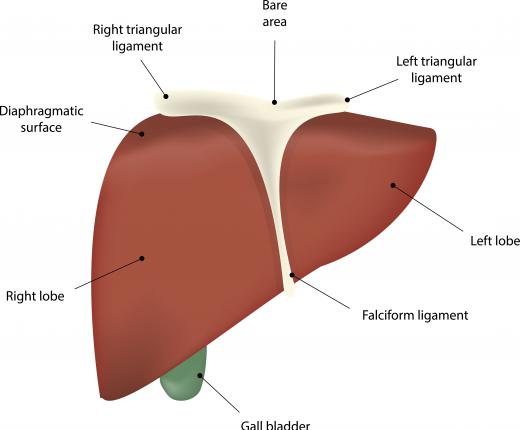What Is a Zymosan?
A zymosan is a polymerized chain of repeating glucose molecules that link with one another at the beta-1,3 sites of each single sugar unit. It is found in yeast cell walls, including Saccharomyces cerevisiae, the yeast commonly used in baking. Yeast is found abundantly in nature and easily replicates in warm, sugary environments. This polymer is very easy to grow and harvest, so it is cheaply available and is often used as a reagent in scientific studies.
Since this yeast cell wall ingredient binds to Toll-Like Receptor 2 (TLR2), it can induce an inflammation response. Toll-like receptors are associated with immune responses in mammalian animals. In many scientific studies, zymosan is used to induce inflammation responses without the introduction of bacteria or other inflammation-causing pathogens that might escape the experimenter's control. By injecting cartilaginous interstitial spaces in the joints of animals in research, inflammatory responses can be induced in a sterile environment. This induced symptom closely resembles the reaction often seen by doctors and scientists who study arthritic conditions, making these injections an invaluable tool in studies aimed at curing arthritis and similar conditions.

The inflammation response due to exposure to zymosan is caused by the excitation and activation of enzyme secretion from macrophages — one small portion of the immune response pathway. This kind of inflammatory response is known as "zymosan-induced inflammation." As scientists are often interested in addressing a disease in its myriad symptoms, the fact that this constituent can induce other associated conditions besides simple synovial tissue inflammation and enzyme secretion from macrophages also assists experimenters in addressing disease conditions. Protein phosphorylation and inositol phosphate formation are two other effects of zymosan-induced inflammation, both of which are often associated with arthritis and inflammatory responses.

Liver damage can also occur after exposure to an injection of this arthritis induction model when combined with galactosamine. This type of damage indicates that zymosan has effects on cells besides macrophages. As opposed to induction of an inflammatory response in a single joint, this wide-reaching reaction in response to the combination of zymosan and galactosamine shows that zymosan exposure can affect the entire body.

By reconstituting lyophilized zymosan and injecting it into joints where there is synovial tissue, an artificial working model for arthritis and inflammation due to repetitive injuries is mimicked, allowing scientists to study these and similar conditions in a controlled environment. The fact that these responses can be controlled in terms of severity and placement makes this technique a relevant model to study diseases that cause an immune response in synovial tissue and joints.
AS FEATURED ON:
AS FEATURED ON:













Discuss this Article
Post your comments